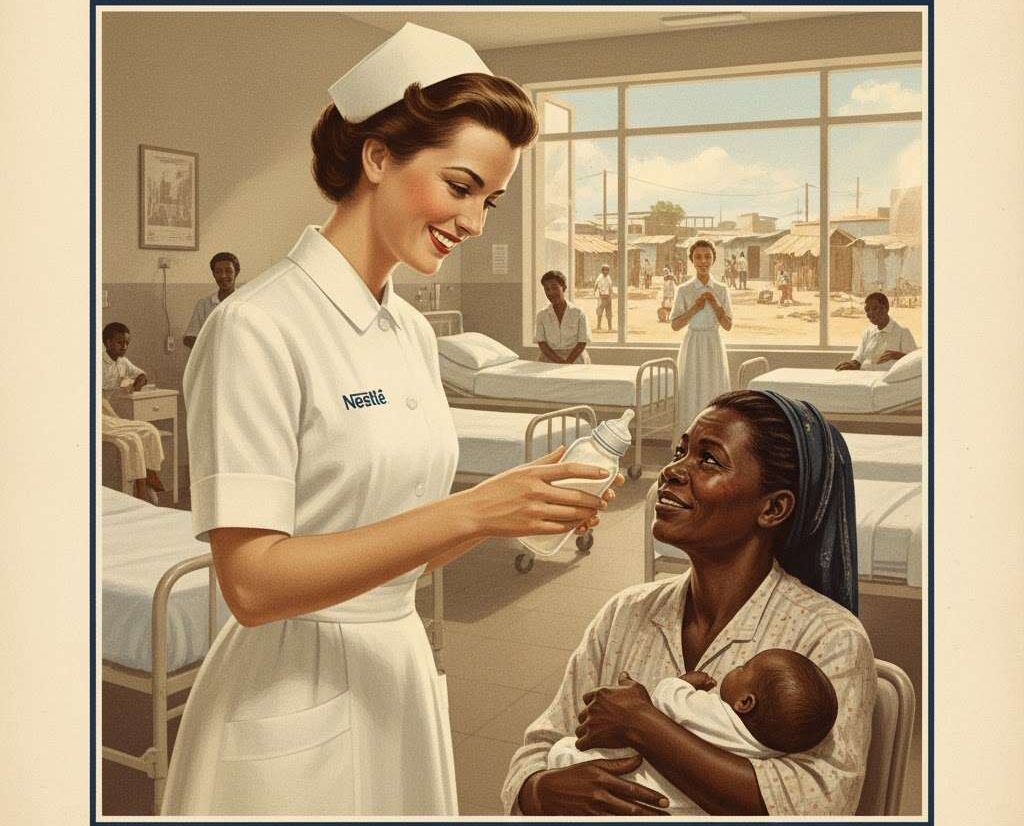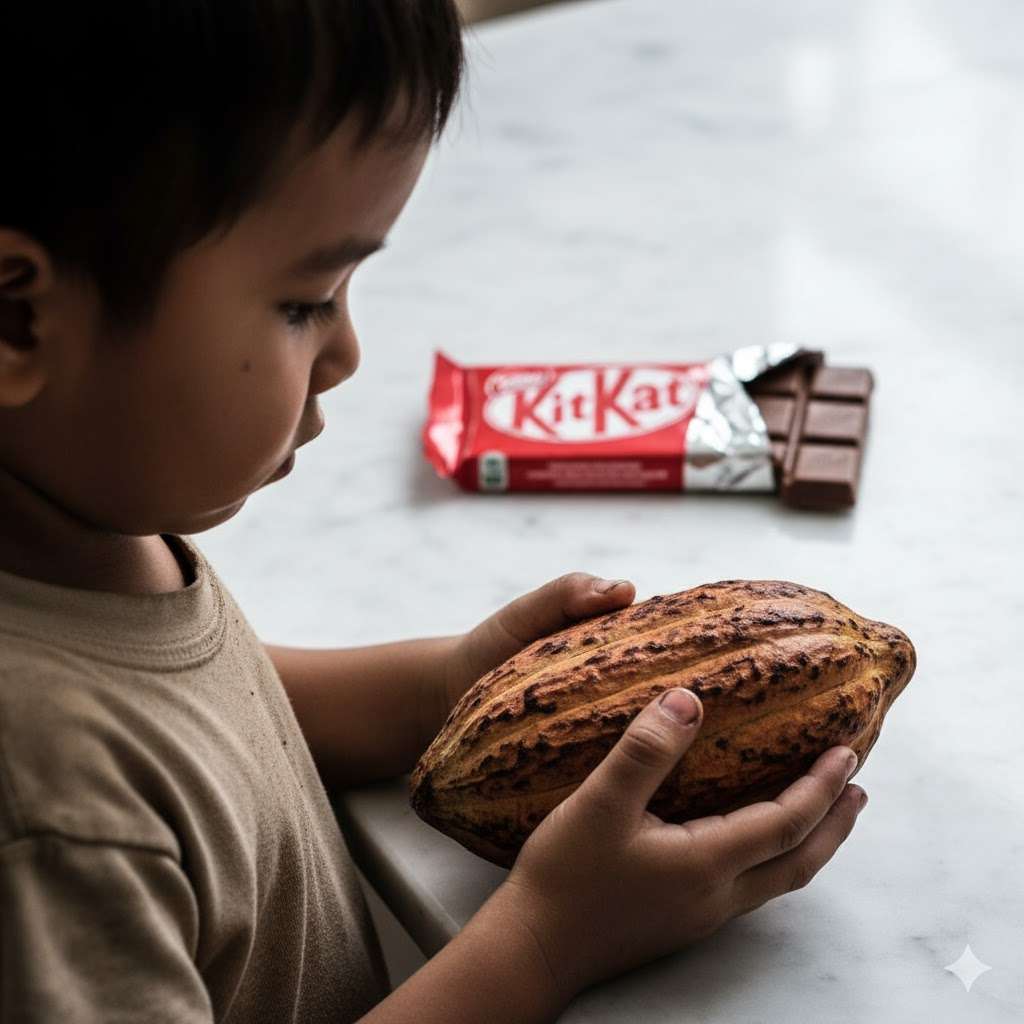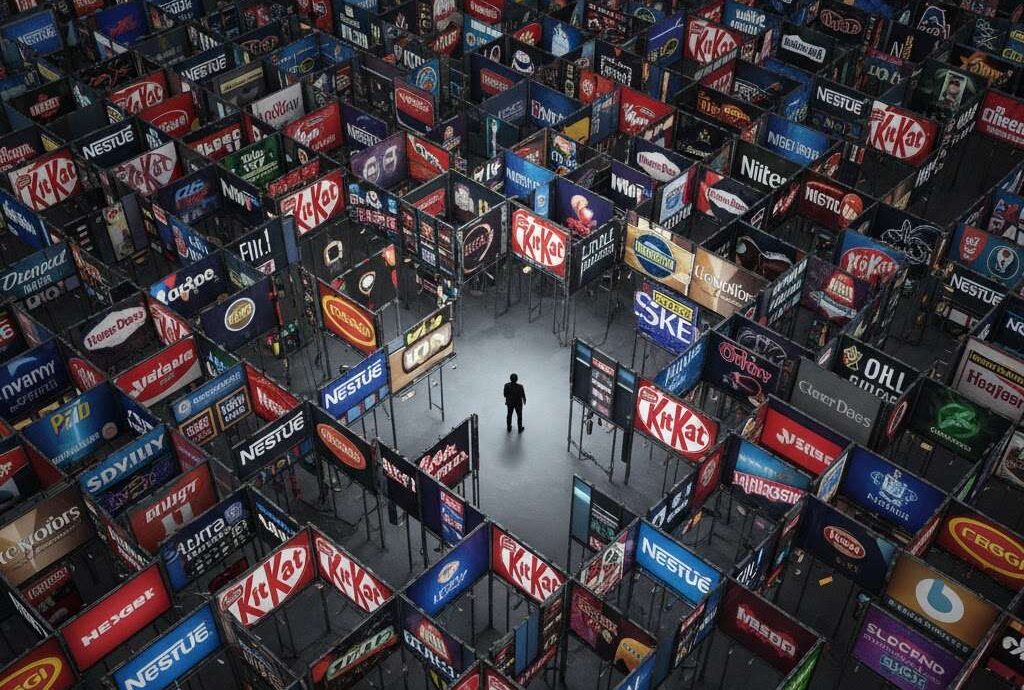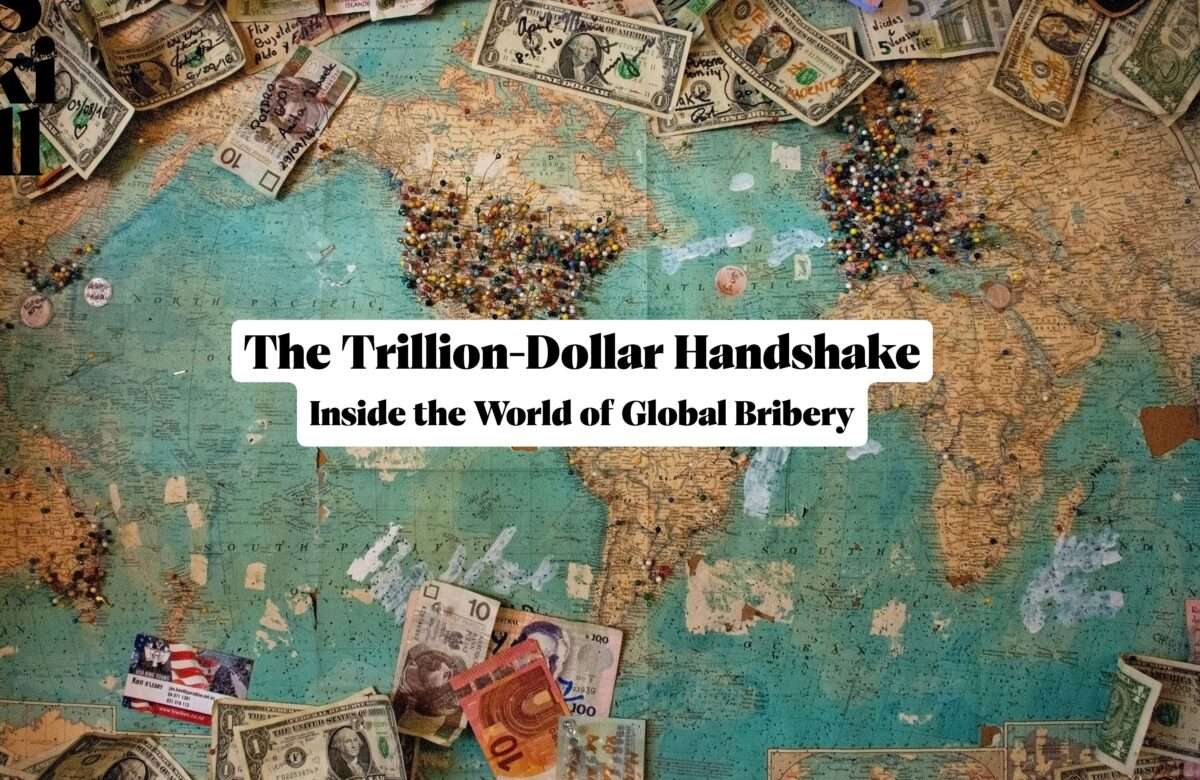- 30 October 2025
- No Comment
- 385
Why People Call Nestlé ‘Evil’
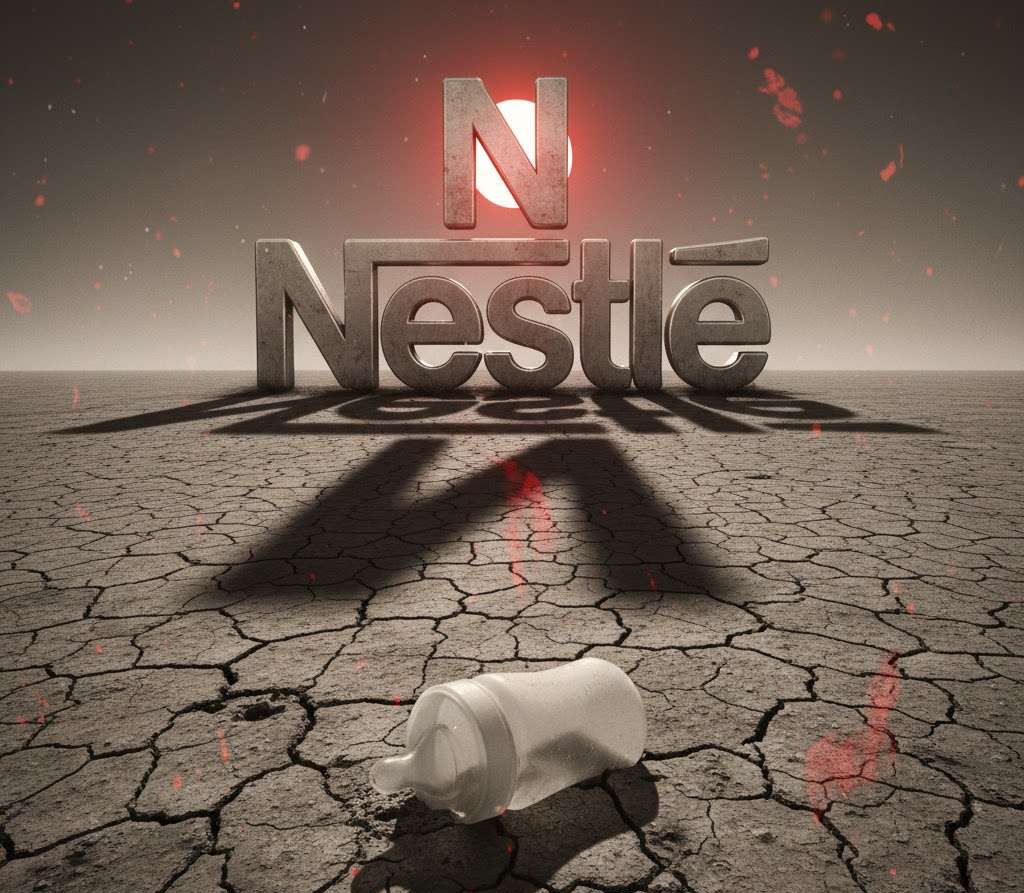
Inside Nestlé’s Global Business Scandals
In pantries and refrigerators across the globe, the Nestlé logo is a quiet, constant presence. It’s the brand behind Nescafé, the comfort of a KitKat bar, the convenience of Maggi noodles, and the perceived purity of Pure Life bottled water. With nearly 2,000 brands operating in 190 countries, Nestlé is the largest food and beverage company on Earth.
But beneath this familiar, comforting surface lies a century-spanning history of controversy, aggressive marketing, and allegations of business practices that have repeatedly prioritized profit over human well-being. It’s a story that challenges the very nature of corporate responsibility. This is the story of how a company built on nutrition became, for its critics, a symbol of corporate greed.
The narrative doesn’t begin with chocolate or coffee, but with the most vulnerable of consumers: infants.
The Great Propaganda Play: Inventing a Market for Baby Formula
The 1970s. Nestlé had a life-saving product: baby formula. For mothers who couldn’t breastfeed or for orphaned babies, this invention was a modern miracle. But from a purely business perspective, this was a niche market. True fortunes, the kind that build global empires, aren’t made by serving only those in need.
The real, untapped market was every other mother. The goal was simple, yet audacious: expand the customer base by 100-fold.
The Problem with Mother Nature
To achieve this, Nestlé had to face its biggest competitor: mother’s milk. Breast milk is a dynamic, living fluid, perfectly tailored to a baby’s needs, packed with immune-boosting antibodies, and, most inconveniently for a business, completely free.
Nestlé’s product, by comparison, was a static, processed powder derived from cow’s milk, sugar, and vegetable oils. To win, Nestlé couldn’t just compete; it had to convince the world that its scientific creation was superior to the natural alternative. It needed propaganda.
Borrowing from Big Tobacco
To understand the campaign Nestlé allegedly concocted, one must look to history’s foremost experts in molding public opinion: cigarette companies.
In the early 20th century, tobacco giants transformed their product from a vice into a symbol of sophistication, glamour, and even health. How? By using trusted figures. Their masterstroke was the “influencer campaign” of its day: full-color magazine ads featuring respectable-looking men in white coats. Slogans like “More doctors smoke Camels than any other cigarette” were a work of psychological genius.
The logic was simple: people trust their doctors. If a doctor says it’s safe, the public will follow.
Nestlé adopted this playbook for its 1970s formula campaign. The goal: get medical professionals to tell new mothers, “Formula good, breast milk bad.”
The “Milk Nurse” Campaign and its Deadly Harvest
The company began paying doctors and nurses to recommend its formula. But the most effective—and most insidious—tactic was deployed in developing nations across Africa, Asia, and Latin America.
Nestlé allegedly hired saleswomen, dressed them in pristine white nurse uniforms, and sent these “milk nurses” into maternity wards and clinics. They would offer medical-sounding advice and, most importantly, provide free samples of formula.
These samples were the key. They were just large enough for a new mother to use for a week or two. During that time, with the baby no longer nursing, the mother’s own natural breast milk production would often dry up.
Suddenly, she was no longer a potential customer; she was a dependent one. Her child’s life now relied on purchasing this product. Nestlé had secured a loyal, profitable customer.
There was just one catastrophic problem: the plan completely ignored the on-the-ground reality of these communities.
- Polluted Water: In many of these regions, access to clean, potable water was a luxury. The instructions on the formula tin required mixing the powder with water and, crucially, boiling it first to sterilize it.
- Illiteracy: Many mothers could not read the instructions. They mixed the expensive powder with whatever water they had—often contaminated river or well water teeming with bacteria.
- Poverty: The formula was expensive. To make a tin last longer, mothers would “over-dilute” it, mixing too much water with too little powder.
The results were tragic and swift. Babies, deprived of the immune-boosting antibodies from breast milk, were fed a nutritionally inferior product mixed with poison. They were essentially being starved and poisoned simultaneously.
International health organizations began to sound the alarm. Babies fed formula in these unhygienic conditions were estimated to be 6 to 25 times more likely to die of diarrhea and 4 times more likely to die of pneumonia compared to their breastfed peers.
The scandal exploded onto the global stage.
“We Can’t Have That Responsibility”
In 1978, Nestlé executives were called before the U.S. Senate. The hearing, led by Senator Edward Kennedy, produced one of the most chilling exchanges in modern corporate history.
The senator laid out the facts: “Would you agree with me that your product should not be used where there is impure water?”
A Nestlé executive, after some evasion, replied, “Yes.”
The senator pressed on: “Where the people are so poor that they’re not going to realistically be able to continue to purchase… which is going to mean that they’re going to dilute it to a point which is going to endanger the health… it should not be used, yes?”
Again, the executive conceded, “Yes.”
Then came the final, devastating question: “What do you feel is your corporate responsibility to find out the extent of the use of your product in those circumstances?”
The executive’s answer was stark: “We can’t have that responsibility, sir.”
A Legacy of Loopholes
The backlash was immense. A massive international boycott of Nestlé products began, one of the largest in history. In 1981, the World Health Organization (WHO) responded by setting new, strict regulations on the marketing of breast-milk substitutes, effectively banning the very tactics Nestlé had used.
This should have been the end of the story. It wasn’t.
Instead of ending the practices, Nestlé allegedly pivoted. It moved its most aggressive marketing efforts to countries with fewer restrictions, particularly in Southeast Asia. In the U.S. and Europe, where the public was watching, the company postured as breast milk’s biggest fan. This duplicitous strategy allowed it to maintain a positive public image in the West while sales skyrocketed elsewhere.
To this day, the infant formula industry, which Nestlé dominates, is set to be worth over $110 billion by 2026. And while marketing tactics are more subtle, critics like Save the Children and UNICEF have continued to report on what they call “unethical” promotion of formula in developing nations.
But the blueprint for aggressive expansion didn’t end with formula. It soon targeted the one resource even more essential than food.
Liquid Gold: The Battle for the World’s Water
What is the number one thing humans need to survive? Water. And while tap water is nearly free, bottled water is one of the most lucrative products on Earth.
The business model is pure genius. You take a resource, often sourced for pennies (or even for free), put it in a plastic bottle, and sell it at an astronomical markup. You’re not selling water; you’re selling an image of purity, health, and majestic mountain springs.
This is the business of Nestlé Pure Life, Poland Spring, and dozens of other brands. One report illustrated the markup: a single tanker-load of tap water, bought for perhaps $10, could be resold in bottles for $50,000.
In first-world countries, this has led to fierce debate, with communities in California, Michigan, and Florida fighting Nestlé over its right to pump millions of gallons of groundwater during historic droughts. But in third-world countries, the practice allegedly took a more extreme turn.
The Pakistan Case: Selling Water Back to its Owners
In 2013, a report emerged from Pakistan that was chillingly familiar. It alleged that Nestlé was diverting massive amounts of clean drinking water from villages to supply its bottling plants.
As the corporate pumps drew millions of liters, the local wells began to run dry. Villagers, who once had access to clean groundwater, were forced to turn to dirty, polluted surface water. The result was a predictable rise in waterborne diseases.
The cruelest irony? Nestlé had bottled their community’s water. It was now being sold back to them—under the “Pure Life” brand—at a price they could never afford. They were left to drink the polluted water while watching trucks of their own clean water, packaged in plastic, drive out of town.
“Water is Not a Public Right”
This commodification of a basic human necessity was at the heart of the company’s philosophy, a view infamously articulated by former Nestlé Chairman and CEO, Peter Brabeck-Letmathe.
In a now-viral video, he stated what he called an “extreme” opinion held by some NGOs: that water is a public right. He disagreed.
“Water is a foodstuff like any other,” he declared. “And like any other foodstuff, it should have a market value.”
The public outrage was immediate and global. To his critics, this was the ultimate expression of Nestlé’s worldview: if you can’t pay, you don’t get to drink.
A decade later, Brabeck clarified his position, stating he has “always supported the human right to water” for fundamental daily needs (drinking and hygiene). But, he argued, when it comes to filling a swimming pool or washing a car, water should have a market price.
For many, the clarification was too little, too late. The curtain had been pulled back. From the most essential resource, water, to the most indulgent, chocolate, the controversies continued.
The Bitter Truth Behind Sweet Chocolate
Every year, the world consumes over three million tons of chocolate. For Nestlé, it’s a cornerstone of the brand, with beloved icons like KitKat, Milky Bar, and Bar One.
But this sweet treat has a bitter origin. A significant portion of the world’s cocoa is grown in West Africa, particularly the Ivory Coast. It’s an industry that has long been notorious for its reliance on the very worst forms of labor: forced labor and child slavery.
Children, often trafficked from neighboring countries, are forced to work on cocoa farms, performing dangerous work with machetes for little ora no pay, all to harvest the beans that become our favorite candy.
Promises Made, Deadlines Missed
In 2000, a damning report emerged that implicated the world’s biggest chocolate giants—including Nestlé, Mars, and Cadbury—in buying “blood cocoa.” It alleged they knew their supply chains were tainted with slave labor and had been for years.
The public was horrified. In response, Nestlé and others publicly promised to clean up their act. They pledged to eradicate forced child labor from their supply chains by 2005.
That deadline came and went. They missed it, set new deadlines. And they missed those, too.
As the years dragged on, the excuses began to wear thin. An executive vice president for Nestlé offered a classic non-denial denial: “The use of child labor in our cocoa supply chain goes against everything we stand for… No company sourcing cocoa from the Ivory Coast can guarantee that it doesn’t happen, but we can say that tackling child labor is a top priority for our company.”
It was the 1978 Senate hearing all over again: a public admission of the problem, coupled with an abdication of ultimate responsibility.
The “Fair Trade” Fig Leaf
With pressure mounting, Nestlé needed a PR victory. They found one in a single product: the KitKat.
The company collected all the cocoa it could find from farms that were certified as not using child labor and funneled it into the production of KitKats in the UK. They slapped a “Fair Trade” label on the wrapper, and suddenly, the KitKat became a symbol of a reformed, caring Nestlé.
But critics called this a “fig leaf.” While this one product was cleaned up for show, the company allegedly continued to use “dirty” cocoa from the same uncertified, tainted supply chain for the rest of its vast chocolate empire.
In later years, as trends changed, Nestlé even shifted away from the strict Fair Trade certification to cheaper, less stringent alternatives like the “Rainforest Alliance” label. This certification focuses more on environmental sustainability—a worthy goal, but one that conveniently diverted public attention away from the more expensive and difficult problem of child slavery.
This pattern of PR maneuvering over real-world suffering would reach a new low during one of Africa’s worst humanitarian crises.

The Ethiopian Debt: A PR Blunder of Historic Proportions
The year is 2002. Ethiopia, one of the poorest countries in the world, is in the grip of a devastating famine. Millions of its citizens are starving to death. The nation is appealing for international aid to prevent a humanitarian catastrophe.
This is the moment Nestlé chose to demand $6 million.
The backstory was complex. In 1986, Nestlé had acquired a German company that had been nationalized by Ethiopia’s previous government in the 1970s. Ethiopia owed the company money and had offered $1.5 million in compensation. By 2002, due to new exchange rates, Nestlé insisted that debt was now $6 million.
For Nestlé, a corporation that made $3.9 billion in profit that year, $6 million was a rounding error. For Ethiopia, it was a lifeline. That money could have provided safe drinking water for 1.5 million families or anti-diarrhea medicine for 750,000 children.
Instead of writing off the debt as a humanitarian gesture, Nestlé demanded its money back from a starving nation.
The backlash was unlike anything the company had ever seen. The public, already wary of Nestlé from the baby formula boycotts, was incensed. It was dubbed the “greatest public relations blunder of the decade.” Facing immense pressure and renewed global boycotts, Nestlé eventually backed down. They accepted the original $1.5 million (which they then donated to charity) and the PR crisis was averted, but the damage to their reputation was profound.
The Nestlé of Today: Too Big to Fail?
Today, Nestlé remains the largest food company in the world. It is, by many accounts, one of the best employers in Europe and a powerhouse of innovation and logistics. Its 300,000 employees and 376 factories are a testament to its staggering success.
For the average consumer, the company’s shady past has been effectively kept under wraps. People are still buying Nescafé, KitKats, and Gerber baby products, often with no knowledge of the scandals that built the brands.
And yet, the controversies are not entirely in the past. In 2021, a leaked internal document from Nestlé itself provided a stunning admission. The presentation, circulated among top executives, admitted that more than 60% of its mainstream food and drink products do not meet a “recognised definition of health.”
From the baby formula tragedy in the 1970s to the commodification of water, the shadows of the cocoa trade, and the PR disaster in Ethiopia, Nestlé’s history is a case study in cognitive dissonance. It is a company built on the idea of “Good Food, Good Life,” yet its legacy is a powerful, controversial, and often troubling reminder of the complex, and sometimes dark, relationship between global corporations, consumer trust, and human lives.

